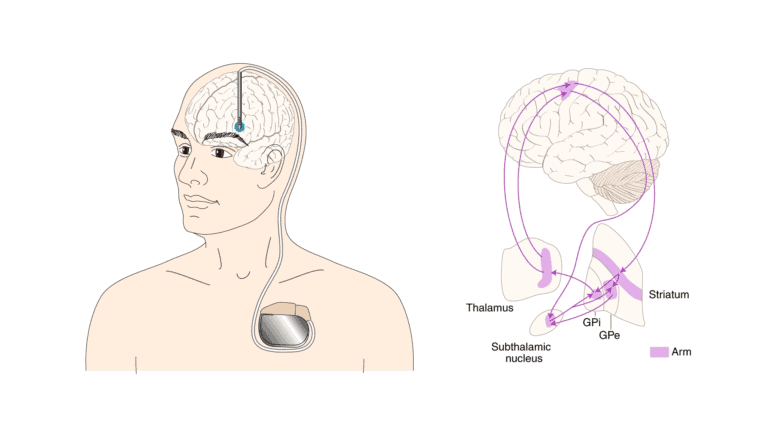Invasive neurotechnology involves a procedure that penetrates a physical boundary of the user, such as the skin. For example, deep brain stimulation uses electrodes that are implanted to target brain regions, such as the subthalamic nucleus in Parkinson’s disease (Cagnan et al. 2019). The stimulation pulse generator is also placed inside the patient’s body. In contrast, non-invasive systems remain outside the physical boundary. For example, EEG game controllers use electrodes on the scalp. Their signal processing and utilization modules are also outside the physical boundary.
However, this does not necessarily mean that noninvasive systems are inferior to invasive systems. There are several applications where noninvasive signals have been used effectively (See an example here).
Reference: Cagnan, H., Denison, T., McIntyre, C. et al. (2019). Emerging technologies for improved deep brain stimulation. Nat Biotechnol 37, 1024–1033.


